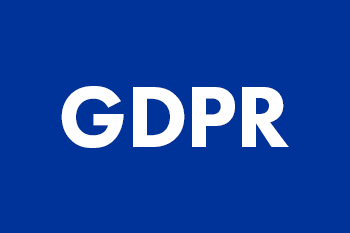Chairman Wenstrup Opens Hearing with Dr. Anthony Fauci – United States House Committee on Oversight and … – House Committee on Oversight and Reform…
June 5, 2024
Todays hearing is Dr. Faucis first public testimony since retiring from federal service
WASHINGTON Today, Select Subcommittee on the Coronavirus Pandemic Chairman Brad Wenstrup (R-Ohio) delivered opening remarks at A Hearing with Dr. Anthony Fauci. Chairman Wenstrup explained how Dr. Faucis divisive rhetoric during the COVID-19 pandemic silenced dissenting opinions and shamed Americans into compliance with coercive mandates, unnecessary masking, and egregious vaccine requirements. Evidence uncovered during the Select Subcommittees two-day, 14-hour transcribed interview with Dr. Fauci proves that the six feet apart social distancing guidance sort of just appeared and was not sufficiently based on science. The results of this guidance were catastrophic and resulted in the closure of small business and schools across the United States. The Chairman noted that many of these pandemic-era policies forced on Americans by Dr. Fauci and his team were, in fact, not based on the science Dr. Fauci claimed to represent. Further, under Dr. Faucis leadership at the National Institute of Allergy and Infectious Diseases (NIAID), both his Senior Advisor and Chief of Staff likely attempted to break federal law. The Select Subcommittee is thoroughly investigating this misconduct and will hold Dr. Fauci accountable for any involvement. Chairman Wenstrup concluded his opening statement by noting that todays hearing with Dr. Fauci seeks to ensure that federal public health institutions and leaders once again become accountable to the American people.
Below are Select Subcommittee Chairman Wenstrups remarks as prepared for delivery:
Good morning, and welcome Dr. Fauci.
First, I want to thank you for decades of public service. You served your country through multiple epidemics, pandemics, and health crisis.
Regardless of any disagreements we may have, you chose to serve and I want to extend our appreciation and gratitude.
I also want to thank you for your willing cooperation with the Select Subcommittee.
You have voluntarily sat for more than 14 hours of testimony and are appearing voluntarily today. This is more than we can say about other witnesses we have called, and we appreciate it.
Dr. Fauci, we are here to investigate the COVID-19 pandemic and to explore lessons learned positive or negative and to better prepare for future pandemics.
Simply put, America cannot move forward without first looking back.
We must know what went right and what went wrong in order to best ingrain proficiencies and remedy deficiencies.
In 15 months, the Select Subcommittee has sent more than 115 investigative letters, conducted 30 transcribed interviewsresulting in hundreds of hours of testimony, heldincluding today27 hearings or briefings, and reviewed more than one and half million pages of documents.
We arent throwing the baby out with the bathwater, that is not the intent. We are following the facts and holding wrongdoers accountable.
Beginning early in 2020, you became the figurehead of public health.
There were drinks named after you, you got bobbleheads made in your likeness, were on the cover of Vogue, and threw out the first pitch at a Washington Nationals game.
Almost overnight, you became a celebrity and a household name, in addition to being a public health official.
Americans from coast to coast and beyond listened to your words. And this is where we could have done betterthis goes to both sides of the aisle.
We should have been more precise.
We should have used the words we meant.
We should have used words and phrases that are accurate and not misleading.
And we should have been honestespecially about what we didnt know.
Dr. Fauci, I am not a virologist. But I am a physician and like most physicians we are constantly learning. Which is why we do continuing medical education and we always seek new information.
We learn new things based on new data. And we want to give our patients the best possible care based on new findings and improvements in science.
At a time when you were prompting the Proximal Origin Paper whose focus was to disprove the lab leak theory, I was in lockdown researching with another physician to try to understand the pathology, the affected physiology and what treatments worked.
He even made a phone call to identify an infectious disease doctor in China.
As well, during that time, we discovered the Baric Shi 2015 article on creating a chimera using gain of function type technology.
While policy decisions should have been based on scientific data, some, frankly, were not.
The burdensome 6-foot social distancing rule, did not have sufficient scientific support.
In your words, it sort of just appeared.
Even Dr. Collins said he still hasnt seen any empirical evidence to support this rule.
A rule that shut down schools and businesses. A rule that will have negative ramifications for decades.
As the pandemic wore on, more mandates also just sort of appeared, but the American public didnt get to see the scientific data to support these mandates.
Americans were aggressively bullied, shamed and silenced for merely questioning or debating issues such as social distancing, masks, vaccines, or the origins of COVID.
Many Americans were willing to comply with 15 days to slow the spread, and understood the necessity of banning travel from certain countries in an attempt to slow the virus. But many Americans became very frustrated when components of those 15 days stretched into years.
And it should not have been the case that Americans were forced to comply with oppressive mandates, when those who chose to illegally cross over our southern border were not.
Or when Governor Newsome or Whitmer were throwing parties at lavash restaurants. Not a good look.
Americans do not hate science. But Americans know hypocrisy when they see it.
Under your leadership, the United States health agencies adopted specific policy aims as a single dogmatic truth, without the benefit of debate. Out of desire for a single narrative.
Dr. Fauci, you once said, If you disagree with me you disagree with science.
Science doesnt belong to any one person.
I was never taught that science turns a blind eye to hypotheses. They serve to be proven or disproven. And done so with irrefutable facts.
It was interesting that you chose not to pursue an aggressive and transparent scientific investigation of both natural spillover and lab leak. We have been investigating both hypotheses.
You testified before the Select Subcommittee in your transcribed interview that the lab leak theory was not a conspiracy theory.
You embraced the Proximal Origin letterit wasnt necessarily a full peer reviewed research paperand shared it with the public from the White House lawn. You stated during your transcribed interview that you did not review published articles that considered a potential lab leak of COVID-19.
This is especially concerning if the works in question were conducted at a more risky and less safe BSL-2 lab.
Nevertheless, any dissent from your chosen scientific position was immediately labelled as anti-science. Anything less than complete submission to the mandates could cost you your livelihood, your ability to go into public, your childs ability to attend school.
Families were thrown off planes and shamed when their two-year-olds struggled to wear a mask.
Children with disabilities lost access to therapy that they, and their families, depended on.
Students were out of the classroom and told to attend school remotely. Even when the science clearly demonstrated it was safe for them to be back in the classroom.
This harmed low-income students the most. And how were single parent households supposed to teach their own children and work at the same time?
Dr.Fauci, you oversaw one of the most invasive regimes of domestic policy the U.S. has ever seen, including mask mandates, school closures, coerced vaccination, social distancing, and more.
We have learned many lessons. Our early fear and confusion was understandable. COVID-19 was clearly novel.
Under your leadership, NIAID allowed disgraced characters like Dr. Peter Daszak to use millions in taxpayer dollars to conduct risky gain of function experiments in Wuhan, China.
The actions of EcoHealth and Dr. Daszak call into question the integrity of NIAIDs policies and procedures as a whole, as well as your role as NIAIDs Director. You did sign off on his research grant.
We need to know why Dr. David Morensyour direct report for more than two decadesassisted Dr. Daszak in avoiding oversight and scrutiny and said that you were involved.
Your senior advisor, and seemingly, your chief of staff, repeatedly attempted to evade transparency laws to shield information from public scrutiny.
We have senior officials from your office in their own writing, discussing breaking federal law, deleting official records, and sharing private government information with grant recipients.
The office you directed, and those serving under your leadership, chose to flout the law. And bragged about it. Why did you allow your office to be unaccountable to the American people?
You were the highest paid person in the government. This makes you more accountable to the people, not less.
Dr. Fauci, whether intentional or not, you became so powerful that any disagreements the public had with you were forbidden and censored on social and most legacy media.
This is why so many Americans were so angrybecause this was fundamentally un-American.
If I make a mistake, I answer to the people of Ohio and my own conscience. When you, or your agency, made mistakes, Dr. Fauci, what happened? We all need to be held accountable.
Sometimes, it is as simple as saying, We were wong.
You took the position that you presented the science; your words came across as final and as infallible in matters pertaining to the pandemic.
But such rigid demands of an ideologically diverse people shattered public trust in American health institutions.
Because I said so has never been good enough for Americans, and it never will be.
It is built into the American spirit we have a thirst for information. A drive for advancement.
Americans were first in flight. Weve landed on the moon. Weve cured diseases. And made innumerable discoveries and explorations that forever changed humanity.
Americans do not want to be indoctrinated. They do want to be educated. And they prefer to make their health decisions in conjunction with the doctor that they know and trust.
To be successful, our federal public health institutions must be accountable to the people again.
To be successful, our health organizations must do what they are supposed to do: protect Americans.
I look forward to a robust and on-topic discussion. Thank you.
###
Excerpt from:
Chairman Wenstrup Opens Hearing with Dr. Anthony Fauci - United States House Committee on Oversight and ... - House Committee on Oversight and Reform...


